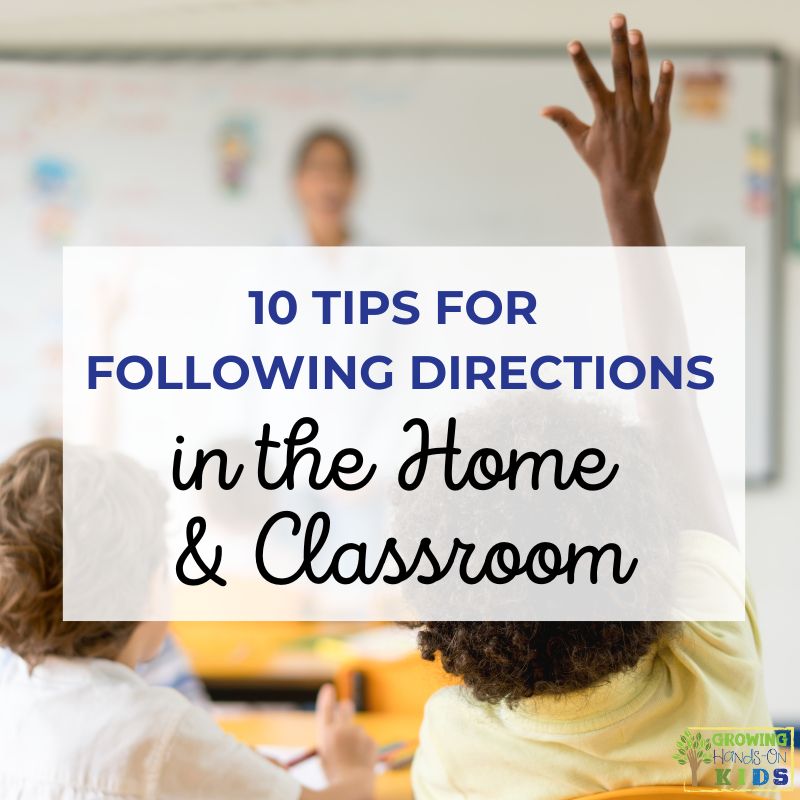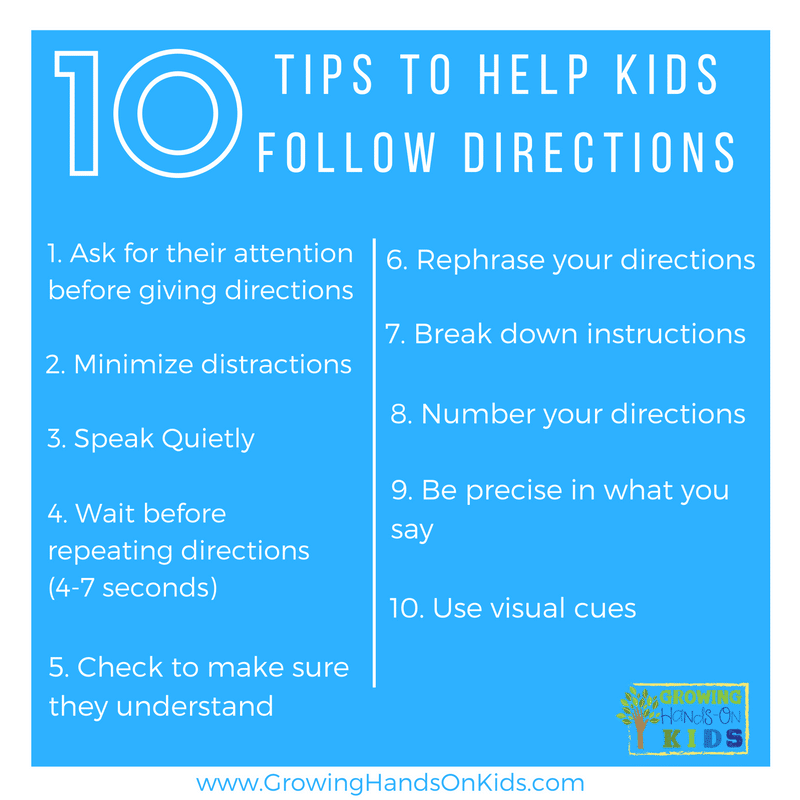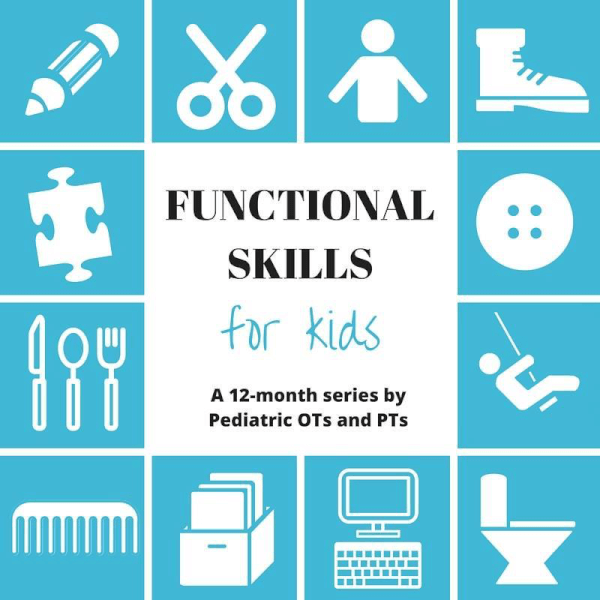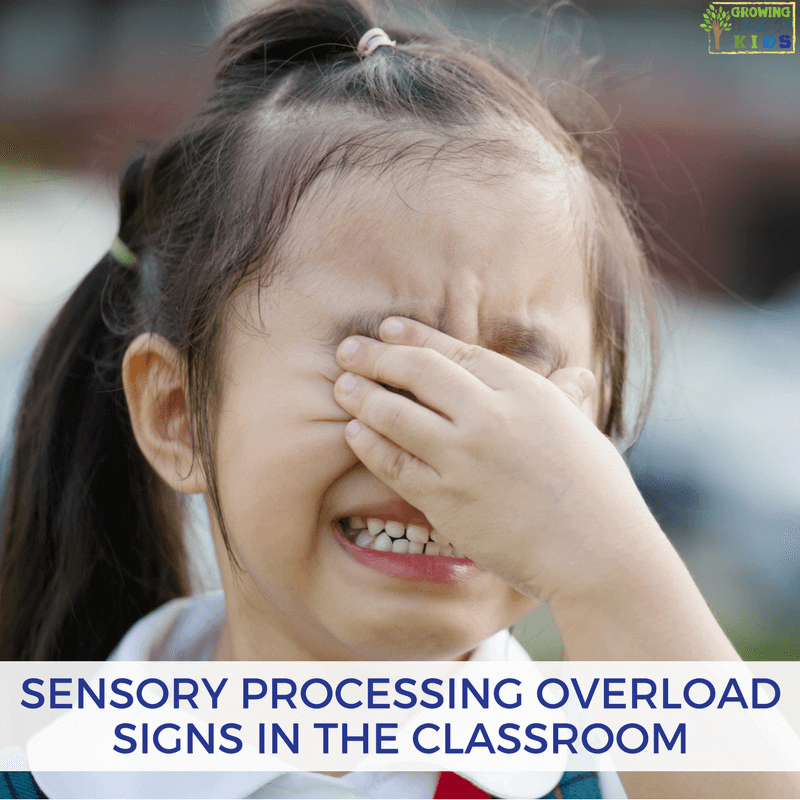10 Tips for Following Directions in the Classroom & Home
Affiliate and Referral links are used below to promote products I love and recommend. I receive a commission on any purchases made through these links. Please see my disclosure policy for more details. As an Amazon Associate, I earn from qualifying purchases.
The beginning of the school year is always challenging trying to get back into the swing of the classroom. Kids have been out of the routine and schedule all summer and sometimes the transition back to school can be challenging. Following directions in the classroom is a concern that comes up a lot during the school year. Many children struggle with this, particularly children with special needs.
In order for kids to follow directions, it's important to understand developmentally what children are able to understand and follow. It's also important to understand all the different ways you can give and encourage direction following based on their abilities. Let's take a look at all of this and more.
Typical Development of Following Directions
It's important to understand what children can follow based on their age and development. Following directions is part of language development and children add to this skill as they get older.
Here is some basic developmental information to keep in mind.
Age 1 – Children are able to understand and respond to simple, 1 step directions such as handing you a toy when you ask for it, or raising their arms when you say “up”.
Age 2 – Your child can start to identify certain objects or body parts which is an important skill for being able to follow directions.
Age 3 – Children begin understanding and carrying out more complex, 2-step directions. An example would be, “Please pick up your clothes and put them in the hamper.” Remember if it is a brand new experience, your child will still have a hard time following the direction or command because it is still new to them.
Age 4 – Children can identify SOME shapes, colors, and letters by this age and this is a very important skill for being able to follow directions in the classroom. Children can also begin to follow more complex directions, such as 3 or 4-step directions. This is when you may notice some receptive language issues if a child is not able to follow through or understand your directions.
If you are working with a child with developmental or cognitive delays, it will be important to remember where they are developmentally in following directions, not just based on their age.
There are also basic concepts that your child needs to be able to understand in order to follow directions appropriately. Some of these include:
- Basic colors such as red, blue, and green
- Directional terms such as through, around, under, over
- Quantities such as few and many
- Sequences such as first, next, last
- Shapes such as round and square
- Sizes such as big and little
- Social and emotional state terms such as happy and sad
- Characteristics such as old and new
- Textures such as rough and smooth
- Times such as late and early
- Spatial relationships and positions such as front, behind, top, and bottom
5 Types of Directions in the Classroom
There are 5 different types of directions or skills that children need to have in order to follow directions appropriately in the classroom or homeschool.
Basic Directions: These are your basic one-step directions such as “Point to the ball”. The difficulties are increased as more descriptive words are added such as color, “bring me the red ball”, size, “bring me the large, red ball.” or location “bring me the large, red ball that is under the slide.”
Sequential Directions: These type of directions is when a child is able to follow multi-step directions or that also require a certain order to complete them in. “please get the large, red ball from under the slide and go put it in the toy bin inside.” or “please put your glue away, clean up your desk and line up at the door.”
Quantitive and Spatial Directions: These types of directions require the student to understand quantitive and spatial directional words such as “before” and “after”.
Temporal Directions: The student’s ability to follow direction words such as “before” or “after” in a variety of situations. High-level activities include auditory memory and processing of these directions with color adjectives included.
Conditional Directions: These directions include tasks that have certain conditions. So the student must decide what action is needed based on that condition.
Tips for Following Directions in the Classroom
When you have a classroom of 20+ students or homeschool with multiple grade levels and ages, it is important to be able to give directions that encourage the best level of success and completion from your students. Here are some ideas to help encourage the following of directions.
Ask for your child’s attention before giving your directions
Eye contact should not be necessary, since some children have difficulty with making eye contact. Instead, ask for children to look towards you or use their listening ears.
Minimize Distractions in the Classroom
This includes any background music, noise, TV, putting down games, or books in order to listen to directions.
Speak Quietly
Giving directions in a soft, even voice tone rather than trying to talk over or over kids will help get their attention more and encourage them to pay attention.
Wait before repeating your directions
Research shows that kids respond better and are able to follow through once they are able to let things sink in. So wait 3-7 seconds to allow your child or class to process your directions. After this time if they still are not able to follow through, repeat the direction again.
Check to make sure they understand
Ask your child to repeat the directions to you after the wait time is over. This will help you to gauge if they understood and were able to process the directions appropriately.
Rephrase directions so that you are telling, not asking
Instead of saying “WOULD you take your papers to your desk?” say “Take your papers to your desk.” The child may think they have a choice about following your directions with the first option.
Break down instructions one at a time
Breaking down multi-step directions into one at a time may be easier for your child to process and follow through with. Break things down into step-by-step directions, starting with the thing that needs to be done first.
Number your directions
This is helpful along with breaking them down from above. Typically people can remember up to 4 steps at a time in their working memory. It’s easier to remember if they are connected, so let your child know how many things are included in the direction and number of each step so they know what each step is.
Be precise in what you say in your directions
Be very specific with your directions, many children have trouble processing planning, or organizing language and this will lead to trouble with vague directions. Be specific with each step and what needs to be done to accomplish that step.
Use Visual Aids/Cues
Using visuals can help many children who have trouble with auditory processing. Breaking down common directions and steps into a visual schedule or cue cards can encourage independence in following the directions, without you having to repeat common directions and steps over and over again.
We have a set of visual-schedule cards, including blank ones that you can use to make your own cards in our Visual Schedule for Daily Routines digital download. It includes card prompts with daily activities such as using the bathroom and different environments. You can find it by clicking on the button below to learn more.
How To Tell A Child Has Problems Following Directions
There are a few clues you can look for if a child may be having problems following directions. They include:
- Taking a long time to respond
- Misreading directions
- Missing key information in verbal directions
- Having trouble recognizing what’s important and what isn’t
- Having difficulty with remembering key information
- Mixing up what you say
- Gets lost when reading directions
- Seems to hear, but does not listen
- Finds it hard to remember details
- Has difficulty responding to direct questions
- Mixes up the order in which things need to be done
Difficulty with these things could mean a few different things for your child. They may have ADHD which makes it hard for children to slow down and follow directions. Children who are diagnosed with Autism may struggle with following directions.
They may have trouble with executive function skills which are high-level cognitive skills, including working memory. Working memory is the brain’s sticky note that helps you to remember incoming information long enough to use it.
It could also mean an auditory processing issue or other language disorder. With both of these, kids can hear fine but have problems processing and following through on incoming directions and information, especially verbal directions. Language-based problems include Dyslexia and Dysgraphia in which children have problems with reading and reading comprehension. This makes it difficult for them to follow written directions.
Ways to Practice Following Directions
So what are some ways you can practice following directions with kids who may be having difficulties in the classroom? Here are some fun ways to do that.
Play Simon Says – Start simple with basic, one-step directions. Once the children have mastered one movement at a time, move on to adding 2 and 3 items to each “Simon Says”
Red Light, Green Light – Red means stop, green means go. Use visuals if children are having problems following that red means stop and green means go. Also, use visuals for the different verbal commands.
Play “I Spy” – Start simple by placing 3-4 items infant of the children and ask them to point to or choose the correct item based on what you spy.
Set up an obstacle course – Children must start at the beginning and complete each obstacle correctly before moving on to the next item. Keep it simple and stick to 3-5 steps.
Subscribe and Get a Free Download of the 10 Tips for Following Directions
Subscribe to Growing Hands-On Kids for my weekly newsletter and get a free printable of the 10 tips for following directions as a free gift. You'll also be the first to know about new printables or products I create and new products I recommend.
If you have already subscribed to GHOK, don't worry, you aren't subscribing again. Entering your email below just lets my email service provider know which printable download to send you. You will not receive duplicate emails from me in the future.
This post is part of the Functional Skills for Kids series by Pediatric Occupational and Physical therapists. This month we are all talking about skills needed for Back to School. Click on the links below to read about the topics on all the other blogs and sites.
Fine Motor Skills Needed at School and Classroom Activities | The OT Toolbox
How Do Gross Motor Skills Affect Academics? | Your Therapy Source
65 Helpful Strategies for Students with Sensory Challenges | Mama OT
Brain Breaks to Help Concentration in the Classroom | Your Kids OT
Things You can do at Home to Help Your Child in School | Therapy Fun Zone
Tips for Following Directions in the Classroom and Home | Growing Hands-On Kids
Positioning In The Classroom |Miss Jaime OT
10 Transition Strategies for Kids: Preventing Tantrums | The Inspired Treehouse
Resources:
Cool, Lisa Collier. “How Kids Learn to Follow Directions.” Working Mother. June 1996. Website. http://www.pediatricservices.com/prof/prof-07.htm
Morin, Amanda. “10 Tips to Help Your Child Follow Directions.” Understood. Website. https://www.understood.org/en/school-learning/learning-at-home/following-directions/10-tips-to-help-your-child-follow-directions
Morin, Amanda. “Why Some Kids Have Trouble Following Directions.” Understood. Website. https://www.understood.org/en/school-learning/learning-at-home/following-directions/why-some-kids-have-trouble-following-directions
Stuckey, Kevin, M.Ed., CCC-SLP & Loraine, Susie S., M.A., CCC-SLP. “Different Ways of Following Directions.”
You May Also Like:

Heather Greutman, COTA
Heather Greutman is a Certified Occupational Therapy Assistant with experience in school-based OT services for preschool through high school. She uses her background to share child development tips, tools, and strategies for parents, educators, and therapists. She is the author of many ebooks including The Basics of Fine Motor Skills, and Basics of Pre-Writing Skills, and co-author of Sensory Processing Explained: A Handbook for Parents and Educators.




